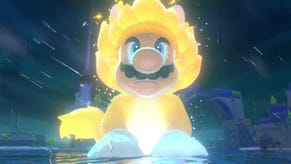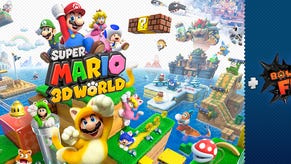The best Mario game - all 18 Mario games ranked
It's been a good few years since the release of Super Mario Odyssey - enough time, surely, to consider its place in Mario history. And, because you all love lists, that naturally means it's also time to think about the true ranking of Mario's platfomer games.
By 'platformers' I mean any 2D or 3D game in the main Mario series where the plumber is the star. So while Super Mario World 2: Yoshi's Island is a magnificent game, it doesn't count. Nor, for that matter, does Super Mario Maker: it can be experienced like a platformer if you've no creative yen whatsoever, but it's been designed as a construction tool. (And as a platformer it's also wildly inconsistent in quality terms, depending on whose levels you're playing. It would basically have to be in first and last place at the same time.)
In putting together this list, I've considered the historical importance of each game, but that comes secondary to how well they stand up today. Sure, without Super Mario Bros., the industry would probably look very different. But does that mean it's the best Mario game ever made? (Spoiler: no, it doesn't.)
Anyway, without further ado, here is my entirely subjective (and 100% accurate) list in reverse order of greatness. Please feel free to tell me how awfully wrong I am in the comments, though do keep it civil - it's just, like, my (correct) opinion, man.
18. Super Mario Bros.: The Lost Levels (1986, Famicom Disk System)
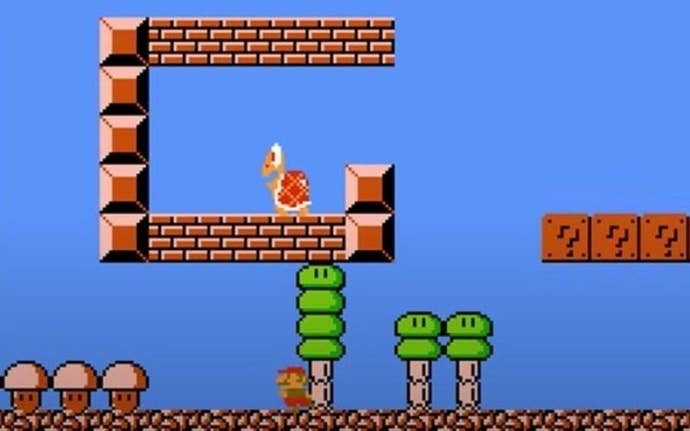
Beyond its value as a historical curiosity, The Lost Levels really isn't worth your time. Essentially a level pack designed to cash in on the success of the 1985 original, it pitched its extreme difficulty as its main selling point, paving the way for dozens of 'masocore' platformers - and, for that matter, nigh-impossible Mario Maker courses - to follow.
Little wonder Nintendo of America balked at releasing it overseas, instead asking Miyamoto and co. to repurpose existing platformer Yume Kōjō: Doki Doki Panic as a Mario game instead. Cheap in every sense, The Lost Levels may be considered by purists as the "true" SMB sequel, but it's easily the least essential game on this list.
17. Super Mario Land 2: 6 Golden Coins (1992, Game Boy)
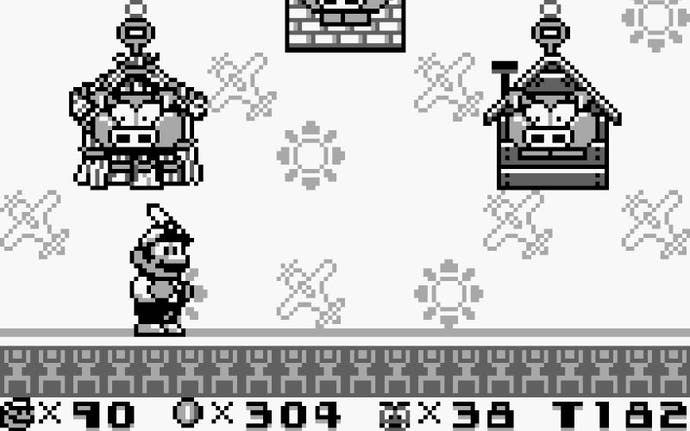
A thumping away victory for Golden Coins in a game notable mostly for introducing the world to Wario, the purple-nosed anti-Mario - and for that we should be eternally grateful to director Hiroji Kiyotake. But while 6 Golden Coins is much closer to the home console Mario games than its predecessor, that's ultimately what makes it a less interesting game. It's a competent but entirely uninspiring substitute - a bit like bringing on James Milner in injury time - and it doesn't do enough new to distinguish itself from its clearly superior console counterparts.
16. New Super Mario Bros. 2 (2012, 3DS)

The Wikipedia page for NSMB 2 opens with the words “Not to be confused with New Super Mario Bros. Wii”, which just about says it all. A perfectly accomplished side-scroller with zero creative spark, this was presumably conceived during a Friday afternoon board meeting when someone shrugged, ‘Well, guess we’d better make another one of these’.
By now, Mario had basically become his former nemesis, with his Wario-like goal to collect a million coins. The avaricious hook feels slightly cynical in a game that was always going to be a licence to print money. Being generous, you could say it’s a satire of sorts, where the main target of both player and creator is the steady accumulation of wealth. Its downloadable challenge packs were brilliant – though, inevitably, they didn’t come for free.
15. New Super Mario Bros. (2006, DS)

It’s ever-so-slightly depressing that this was the game to introduce a generation of players to Mario – and remind lapsed gamers what they’d been missing – when in essence there isn’t a whole lot that’s genuinely new about it. Still, NSMB isn’t a bad game.
It’s a gentle, fuzzy trip down memory lane, prettied up with an inoffensively safe art style that, over subsequent follow-ups, grew to feel increasingly bland. It’s the vanilla ice cream of Mario games, basically – and so, inevitability, it’s also one of the series’ biggest-sellers, shifting a frankly ludicrous 30 million copies and counting. If it’s your favourite Mario it’s probably the only one you’ve played.
14. New Super Mario Bros. U (2012, Wii U)
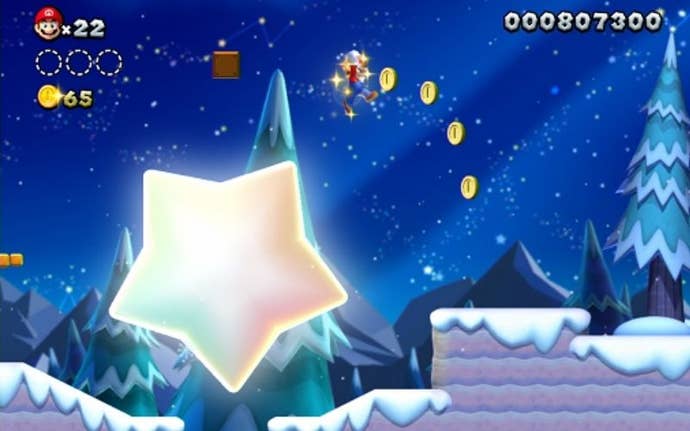
You may just sense a pattern emerging here. NSMBU actually started a good few places higher on this list when I started putting it together – and then I kept finding reasons to bump it down a notch or two. Mostly it’s because, in this day and age, being kicked back to the world map every time you die just so you can maybe use an item before diving back in feels pointlessly archaic – particularly during the final world or so when it starts putting the boot in.
Its asymmetric co-op multiplayer mode, with one player using the GamePad (which, post-Switch, looks more than ever like a Fisher Price toy) to place platforms to help or hinder others, is a fleeting novelty at best. NSMBU is your archetypal Jack of all trades, and if you remember the other half of that figure of speech you’ll know why it’s only in 14th spot.
13. Super Mario Bros. 2 (1988, NES)
.jpg?width=690&quality=70&format=jpg&auto=webp)
Nintendo of America really isn’t in the position to tell its Japanese bosses what to do these days, but back in the mid-Eighties it made the right call to demand that this would follow Super Mario Bros and not The Lost Levels. Looking back, it’s obviously an anomaly, but that’s what makes it so fascinating, and several of its ideas have become integral parts of Mario games since.
Playing as different characters gives it a different flavour each time – Nintendo pinched Luigi’s high jump and Peach’s floating ability for Super Mario 3D World – while Captain Toad: Treasure Tracker revisited the idea of plucking turnips from the ground to throw at patrolling Shy Guys. It may once have been considered the black sheep of the Mario family, but it’s been warmly welcomed back into the fold.
12. New Super Mario Bros. Wii (2009, Wii)
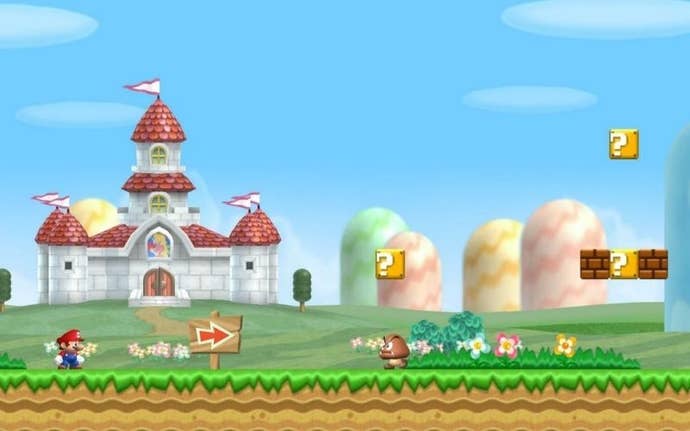
Four-player co-op! The noob-friendly Super Guide! Propeller Mushrooms! Penguin suits! NSMB Wii is the pick of the recent 2D entries, mainly by dint of living up to the ‘new’ tag more than the rest, but also because it hits the Goldilocks zone of challenge: neither too hard nor too soft, but perched juuuust on the line between fun and frustration. More convivial and inclusive than the DS game, with better level design than its successor, it’s almost certainly the best NSMB game to date – if still a little way off top-tier Mario.
11. Super Mario Land (1989, Game Boy)
.jpg?width=690&quality=70&format=jpg&auto=webp)
If the finest version of Tetris – oh yes it is – is the first game most will think of when they reminisce about the Game Boy’s early days, Super Mario Land surely comes a close second. It’s a slip of a thing – just a dozen levels long, including two stages where it turns into a scrolling shooter – but a tough nut to crack, with a few devious breaks from Mario formula (not only can you not jump on Koopa shells, but they explode).
Produced by Miyamoto’s mentor, the late Gunpei Yokoi, it’s mysterious and dangerous in a way that none of the ‘New’ games are. Oh, and Hip Tanaka's soundtrack is a copper-bottomed masterpiece. Proof? If you ever owned a Game Boy, I guarantee you’re humming it right now.
10. Super Mario Bros. (1985, NES)
.jpg?width=690&quality=70&format=jpg&auto=webp)
The original, and no longer the best. But what a tribute to Shigeru Miyamoto and Takashi Tezuka that a 33-year-old game still warrants a place in the top ten. It’s not as dynamic or inventive as more recent entries, but it remains a masterpiece of simple, elegant design, meticulously planned out – on graph paper, remember – to work with clockwork precision.
SMB didn’t just birth a new mascot, but a new genre, and in the process gave the games industry the shot in the arm it needed after the crash of 1983. Special mention to composer Koji Kondo, without whose unforgettably infectious themes this might not have been the triumph it was (and still is).
9. Super Mario Sunshine (2002, GameCube)
.jpg?width=690&quality=70&format=jpg&auto=webp)
Wait. Hear me out. Imagine, for a moment, you were asked to play every Mario game, one after the other. A few of them would blur into an indistinguishable mass, but you’d absolutely remember Sunshine – admittedly not always for the right reasons. It was finished in a hurry and, at times, it shows. The camera is wretched during indoor stages. The blue coins feel like padding - content for content’s sake. And don’t get me started on that sodding pachinko level.
But if it occasionally plumbs depths that no other Mario game has, its peaks more than compensate. Water-powered backpack FLUDD transforms the way you get around, prompting exhilarating belly slides, jet-propelled leaps and more. There are colossal stingrays, soaring sand birds, and beaks on legs to be butt-stomped off giant mirrors. In Noki Bay it has one of the most enigmatic, secret-stuffed Mario worlds ever, and Delfino Plaza remains the series’ greatest hub: a sunny, happy sandbox in which to play and spray.
8. Super Mario 64 (1996, N64)
.jpg?width=690&quality=70&format=jpg&auto=webp)
A common misconception about Super Mario 64 is that it translated the essence of 2D Mario into 3D. Not really – the likes of 3D Land and 3D World actually get much closer to that ideal. Instead, it basically laid down the foundations for an entirely new genre: the sandbox adventure. Sure, there were still obstacle courses that required careful positioning and precision jumping, but its stages were built to allow Mario to stretch his legs and roam freely in every direction, not just left and right.
Some insist this is still the pinnacle of Mario’s achievements, but those nostalgia goggles would need to be pretty thick to overlook its flaws: its camera is clumsy, its animations are crude, and in places it’s downright ugly. That it’s still a joy to play regardless says plenty: it may have been superseded by the likes of Galaxy and Odyssey but just about every 3D game released since owes it a substantial debt.
7. Super Mario Bros. 3 (1988, NES)
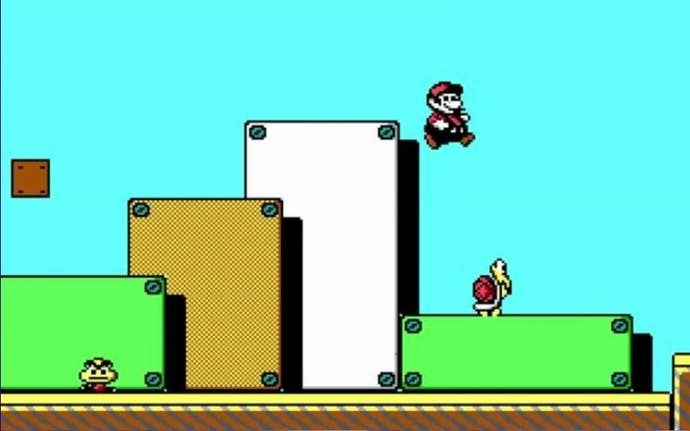
American readers, look away now. If this list was based purely on historical merit, you could make a strong case for this being right at the top of the tree. In terms of defining what a Super Mario game was and could be, it might just be even more important than the plumber’s first steps into 3D.
SMB3 laid down the template that’s been slavishly followed by the New series since, but it also established a set of foundational principles upon which all subsequent Mario games have built. That it’s still in seventh place testifies to how well it’s aged, and to inventive ideas like the Frog Suit and Kuribo’s Shoe – the kind of throwaway creative flourish that’s become a key hallmark of the series ever since.
6. Super Mario 3D Land (2011, 3DS)
.jpg?width=690&quality=70&format=jpg&auto=webp)
Mario's return from space was always going to result in a bumpy landing. After Galaxy and its sequel, 3D Land seemed to come from the NSMB school of design - lacking the visual pizzazz and freewheeling invention of its Wii U successor. Still, this was Nintendo's attempt to get millions of NSMB players to take their first, faltering steps into the third dimension as championed on the 3DS - and in that regard it was a success, with the Tanooki suit functioning as a less explicit assist mode for novice players.
It demands to be played with the stereoscopic slider up: jumping on Goomba heads is far easier here than it is in any 3D Mario before or since, simply because your position in 3D space is much easier to judge. And just as it seems to be winding up, it kicks you back to the start, remixing old levels - some unrecognisable from their original form - and adding fresh challenges that add up to some of the most tautly-designed Mario courses ever. Play it again and rediscover its greatness.
5. Super Mario Galaxy 2 (2010, Wii)
.jpg?width=690&quality=70&format=jpg&auto=webp)
An expansion pack masquerading as a sequel that feels like a victory lap for a team operating somewhere close to the peak of its powers. Galaxy 2 has comfortably enough ideas to warrant the number in its title – in fact, you could make a strong case for this being the most consistently strong Mario game in terms of its level design. Yet it lacks the freshness of the first game.
It’s a bit like being the second man in space – still a heck of an achievement, but it’s the other guy everyone remembers. And it’s not without flaws: the spaceship hub, blander than Galaxy’s celestial observatory, was designed to trim downtime between stages, but then why bother with a hub at all? But at this stage I’m pointing out cracks in the Mona Lisa: this is still a dizzying delight of a game, packed to the rafters with brilliant moments, power-ups, and – most importantly of all – Yoshis.
4. Super Mario 3D World (2013, Wii U)
.jpg?width=690&quality=70&format=jpg&auto=webp)
Take note, New Super Mario Bros., this is how you do multiplayer Mario. There's a reason Super Mario 3D World is considered one of the best Mario, and Wii U games. And, for that matter, compromise. Super Mario 3D World set developer EAD Tokyo an astonishingly difficult task: to make Mario courses that work as well for four players as for one, that can be tackled with a d-pad or an analogue stick.
As such, it goes easy on you for at least the first few worlds, widening platforms and narrowing gaps, making it the ideal game for parents to play with their kids. Then it throws off the shackles, giving you less room and time while upping the enemy count, as if to encourage lone players to get to the real meat of the game. Anyone who thought Odyssey had too few obstacle courses could do worse than return to this and be reminded of one of the few things the Switch game is missing. The other, of course, being Toad in a cat outfit.
3. Super Mario World (1990, SNES)
.jpg?width=690&quality=70&format=jpg&auto=webp)
American readers, look away now (again). There’s a clear UK/US divide when it comes to Super Mario World and Super Mario Bros. 3, and it’s all down to hardware history. Nintendo didn’t have much of a presence in Europe until the SNES, and so it’s World rather than 3 that we Brits all remember from our youth. Even setting those rose-tinted memories aside, World is much more than a refinement of its immediate predecessor.
It takes a break from the Mushroom Kingdom, in the process giving Mario a fresh lick of paint that sets it apart from all his other 2D outings. Witness the clear visual throughline from the original designs to NSMB in Super Mario Maker; World is the obvious outlier. Beyond that, it gave us Yoshi, the cape feather, that Cheese Bridge shortcut, and an intricate world map that was so much more than the courses it contained. Even beyond those 96 exits, it always felt like there were secrets you hadn’t quite managed to unearth.
2. Super Mario Odyssey (2017, Switch)
.jpg?width=690&quality=70&format=jpg&auto=webp)
The Nintendo Switch has given us some of the best games, including ones featuring the mustachioed man. Odyssey doesn't just feel fresh because it is the newest solo Mario adventure; it's because it is the most wide-ranging of any of his adventures. It builds upon the groundwork of 64 and Sunshine, refining the sandbox structure of the former and the augmented movement of the latter. And in spectral ally Cappy, he has a portable power-up that’s transformative in a literal sense: Mario might handle better than ever, but you’re constantly encouraged to leave him behind by taking control of his enemies.
From caterpillars with concertina bodies that produce a musical wheeze as they stretch, to elastic-legged onions and birds whose beaks double as climbing pitons, they’re all a joy to inhabit. It’s a journey that caters to all tastes, too: athletic challenges are there for those looking to test their platforming prowess, while keen explorers can focus instead on probing a world’s knots and nooks to unlock the next.
1. Super Mario Galaxy (2007, Wii)
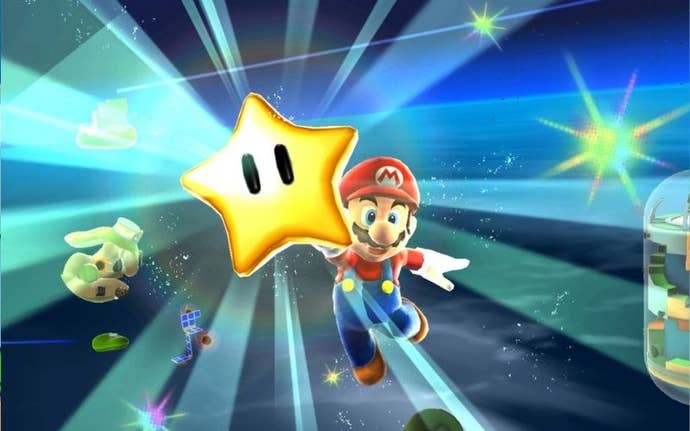
There are two planetoids in the Gusty Garden Galaxy that together form a giant question mark. It’s fitting for a game where you so often find yourself in baffled amazement: What? Why? How? There are countless moments of wonder: it's a game of relentless, wide-eyed invention, its dozens of disparate elements put together.
It all hangs together, this magical place where Mario can grab a flower petal and be whipped along by spiralling winds to huge apples with wooden stakes driven through them, a ground-pound sending a colossal caterpillar burrowing out to bridge the gap to another Red Delicious floating nearby. A little storybook tale of a celestial mother and daughter relationship shifts the focus away from the tired save-the-princess scenario, showing how a little narrative context can go a long way (its absence is just one of a handful of small ways the sequel doesn't quite match up).
After a while you'll stop wondering and start marvelling, accepting the madness with open arms. Eleven years on, only one question remains: when the hell is this coming to Switch?
.jpg?width=690&quality=80&format=jpg&auto=webp)


